The science and mystery of Jupiter's many moons
What's orbiting the solar system's largest planet?

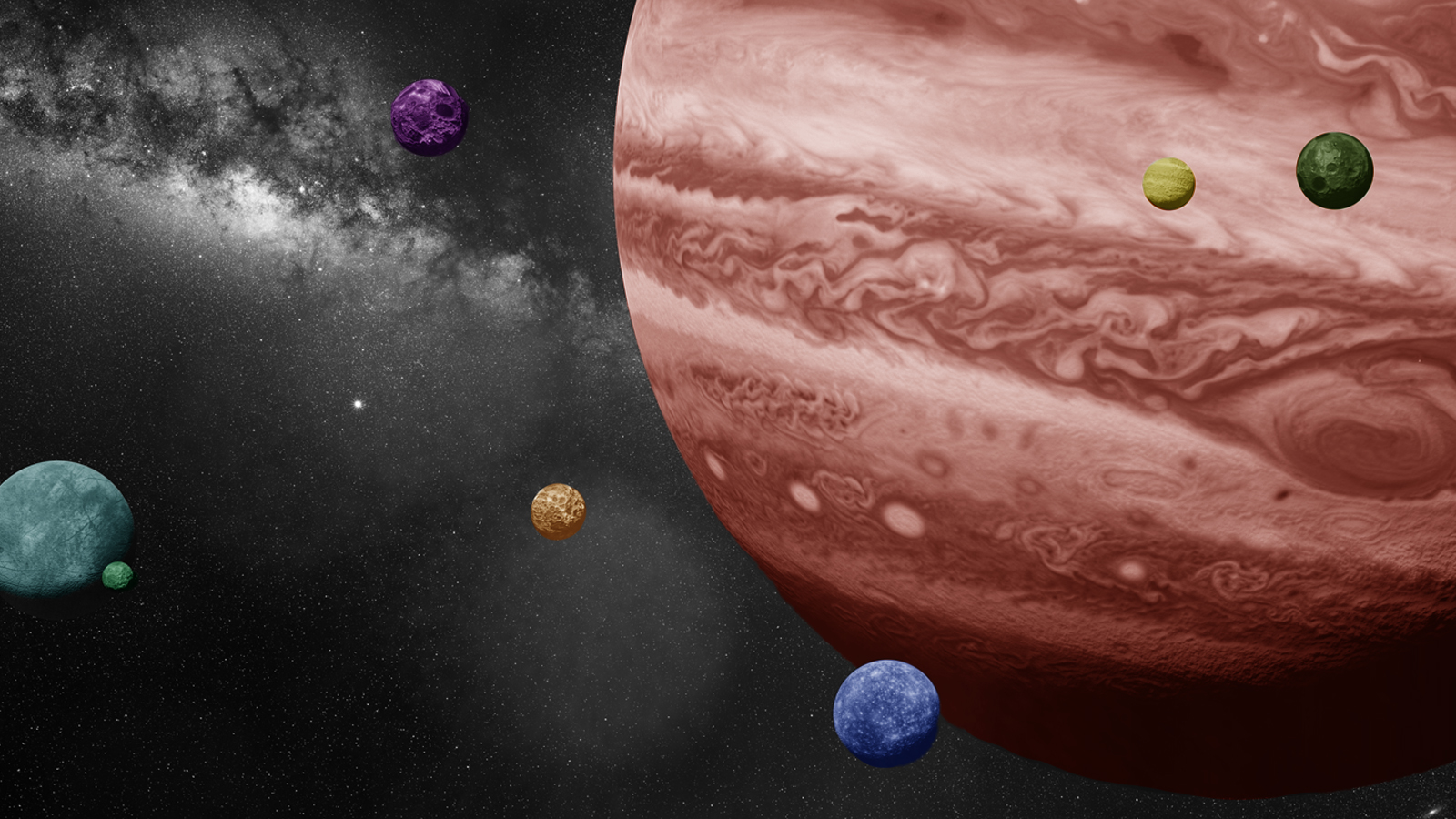
Astronomers recently discovered 12 additional moons orbiting Jupiter, bringing the planet's confirmed number of moons to 92. This is the highest planetary moon-count in our solar system. Why does Jupiter have so many moons, and what secrets might they hold?
Why does Jupiter have so many moons?
Jupiter, along with the other outer planets Saturn, Uranus, and Neptune, is a "gas giant." It is the largest planet in the solar system, both in size and mass. "If Earth were the size of a nickel, Jupiter would be about as big as a basketball," NASA explains. With great mass, comes great gravitational pull. Jupiter has pulled thousands of objects into its orbit, though not all of them are considered moons.
The other factor that works in Jupiter's favor is that it's far enough away from the sun to avoid "lunar theft," says HowStuffWorks. Since the sun also has a massive gravitational pull, a planet like Jupiter would likely have very few, if any, moons if it were closer to the sun because they would "get caught in a game of celestial tug of war," explains French astronomer Fathi Namouni.
The Week
Escape your echo chamber. Get the facts behind the news, plus analysis from multiple perspectives.

Sign up for The Week's Free Newsletters
From our morning news briefing to a weekly Good News Newsletter, get the best of The Week delivered directly to your inbox.
From our morning news briefing to a weekly Good News Newsletter, get the best of The Week delivered directly to your inbox.
Are there more?
"Many, many more," according to Scott Sheppard of the Carnegie Institution for Science, who led the team that made the recent discoveries. However, spotting and confirming the planet's moons poses unique challenges.
Jupiter is exceptionally bright, which creates "glare and scattered light affecting the space where moons can exist," CNN writes. Also, many of the moons orbiting Jupiter are very small, which makes them hard to see. Of the 12 newly-discovered moons, half are bigger than 1.5 miles in size, which is how big a planet has to be in order to get a name.
Another factor is orbit time. In order for a satellite to be confirmed as a moon, its orbit needs to be tracked. Observations of the potential moons were made in 2021 and 2022, but all 12 moons took at least 340 days to complete their orbit, "and nine take more than 550 days," Smithsonian Magazine explains, "so this proved to be a slow process."
Scientists are hoping to learn more about the newly-discovered moons. The European Space Agency is launching its Jupiter Icy Moons Explorer in April, and NASA is expected to launch its Europa Clipper mission in 2024.
A free daily email with the biggest news stories of the day – and the best features from TheWeek.com
"These outer moons can only be visited by these spacecraft as they enter Jupiter's gravitational sphere of influence," Sheppard tells CNN. "The hope is that if we find enough, one of them will happen to just be near the spacecraft's trajectory for it to get close-up images."
What can we learn from them?
Jupiter's four largest moons, Io, Ganymede, Callisto, and Europa, have intrigued astronomers since their discovery by Galileo in the 1600s. Io is covered in volcanoes that "ooze lava onto the moon's surface," says Space.com. The website explains that Io also has a "collapsible atmosphere," meaning that the "envelope" of sulfur dioxide gas that surrounds the moon freezes once a day when the moon is in Jupiter's shadow. "When Io comes back into the sunlight, the freezing sulfur dioxide converts to gas once more."
Ganymede is the largest moon in the entire solar system, and has its own internal magnetic field. Callisto is covered in large, ancient craters, which helped document the history of the early solar system. Europa is the most studied of Jupiter's moons because it has liquid water. It "may be the most promising place in the solar system" to harbor life outside of Earth, says NASA.
The newly-discovered moons, while small, are also of interest. "These outer moons are important to understand because they are the last remnants of the population of objects that formed in the giant planet region as the rest of the material was incorporating into the planets," explains Sheppard. The moons could also be the remnants of seven larger moons that collided and broke apart. "I hope we can image one of these outer moons close-up in the near future to better determine their origins," Sheppard explains in an email to The Associated Press.
"We want to have a detailed map of everything that is out there, so we know what to expect and can plan missions accordingly," says Mike Alexandersen, an astronomer at the Minor Planet Center who helped publish the discoveries. "Next time there is a mission to Jupiter, that mission can be planned to have close flybys (and thus cool photos) of as many of those small moons as possible."
Devika Rao has worked as a staff writer at The Week since 2022, covering science, the environment, climate and business. She previously worked as a policy associate for a nonprofit organization advocating for environmental action from a business perspective.
-
 A foodie guide to Edinburgh
A foodie guide to EdinburghThe Week Recommends Go all-out with a Michelin-starred meal or grab a casual bite in the Scottish capital
-
 Political cartoons for December 24
Political cartoons for December 24Cartoons Wednesday's political cartoons include Christmas in Greenland, grinchflation, and California floods
-
 Is there a Christmas truce in the Starmer farmer ding-dong?
Is there a Christmas truce in the Starmer farmer ding-dong?Today’s Big Question There’s an ‘early present’ for farmers but tensions between Labour and rural communities remain
-
 Blue Origin launches Mars probes in NASA debut
Blue Origin launches Mars probes in NASA debutSpeed Read The New Glenn rocket is carrying small twin spacecraft toward Mars as part of NASA’s Escapade mission
-
 ‘The Big Crunch’: why science is divided over the future of the universe
‘The Big Crunch’: why science is divided over the future of the universeThe Explainer New study upends the prevailing theory about dark matter and says it is weakening
-
 The moon is rusting
The moon is rustingUnder the radar The Earth is likely to blame
-
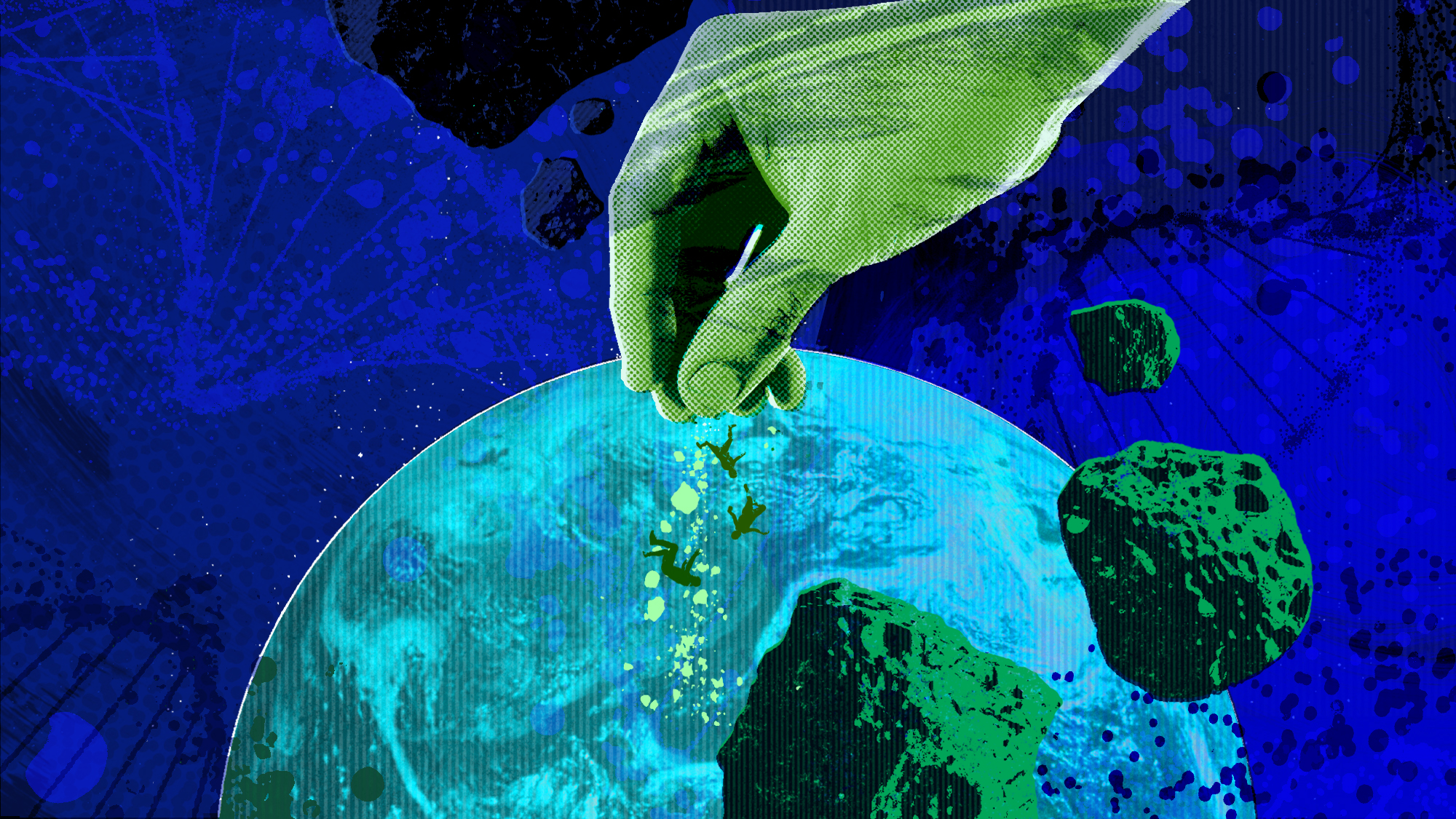 Panspermia: the theory that life was sent to Earth by aliens
Panspermia: the theory that life was sent to Earth by aliensUnder The Radar New findings have resurfaced an old, controversial idea
-
 Africa could become the next frontier for space programs
Africa could become the next frontier for space programsThe Explainer China and the US are both working on space applications for Africa
-
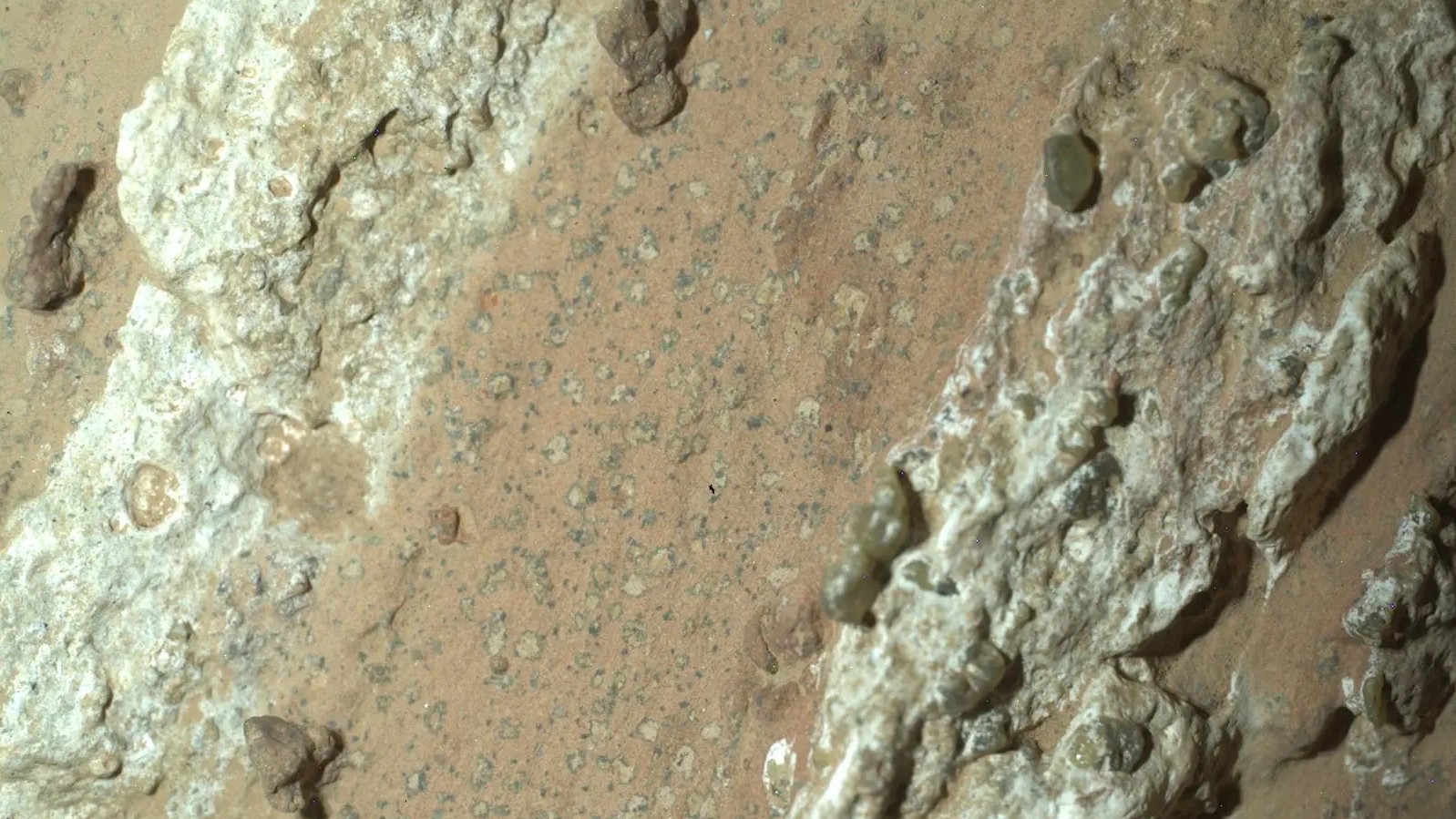 NASA reveals ‘clearest sign of life’ on Mars yet
NASA reveals ‘clearest sign of life’ on Mars yetSpeed Read The evidence came in the form of a rock sample collected on the planet
-
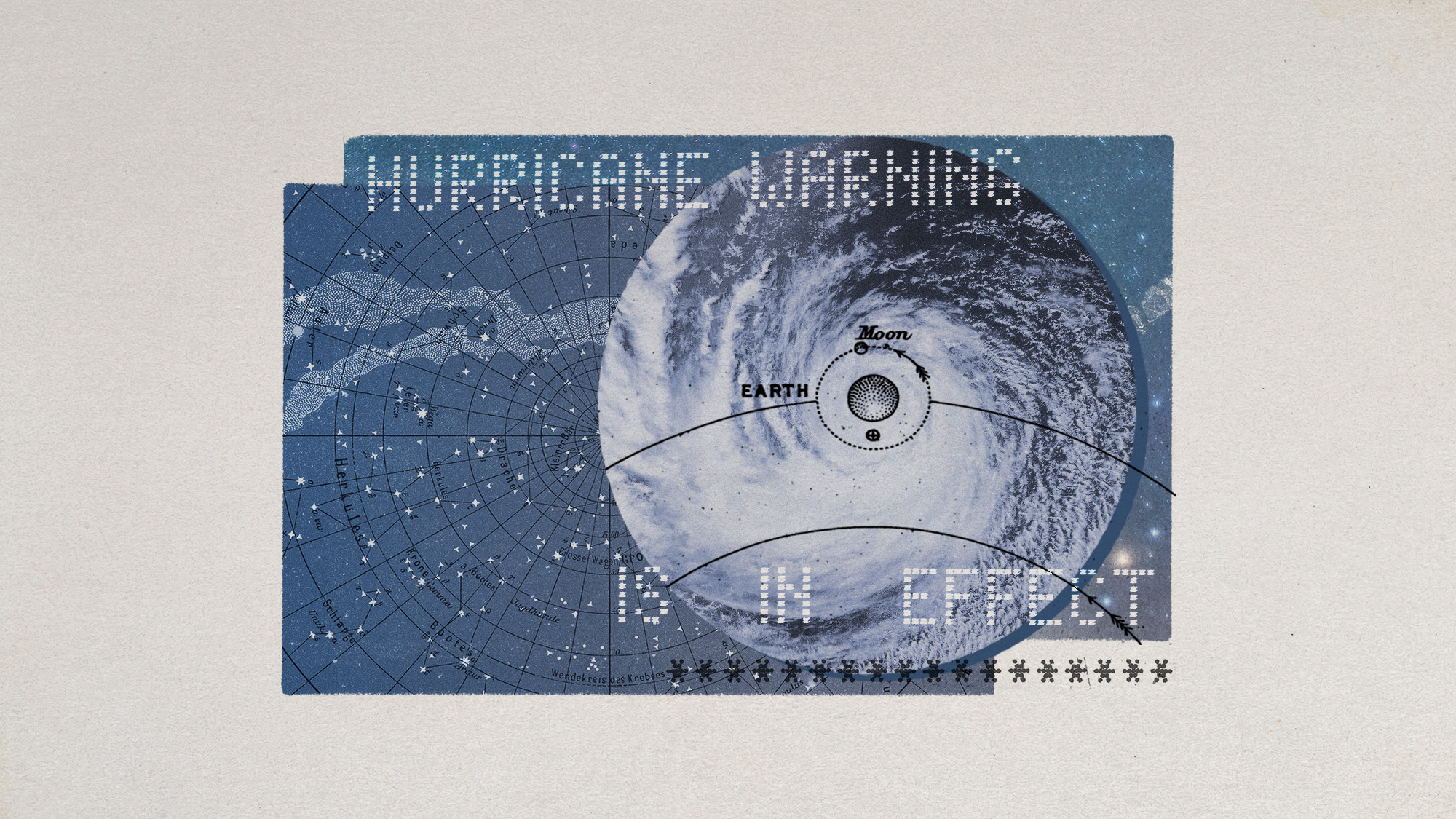 Hurricanes are not exclusive to Earth. They can happen in space.
Hurricanes are not exclusive to Earth. They can happen in space.Under the radar These storms may cause navigational problems
-
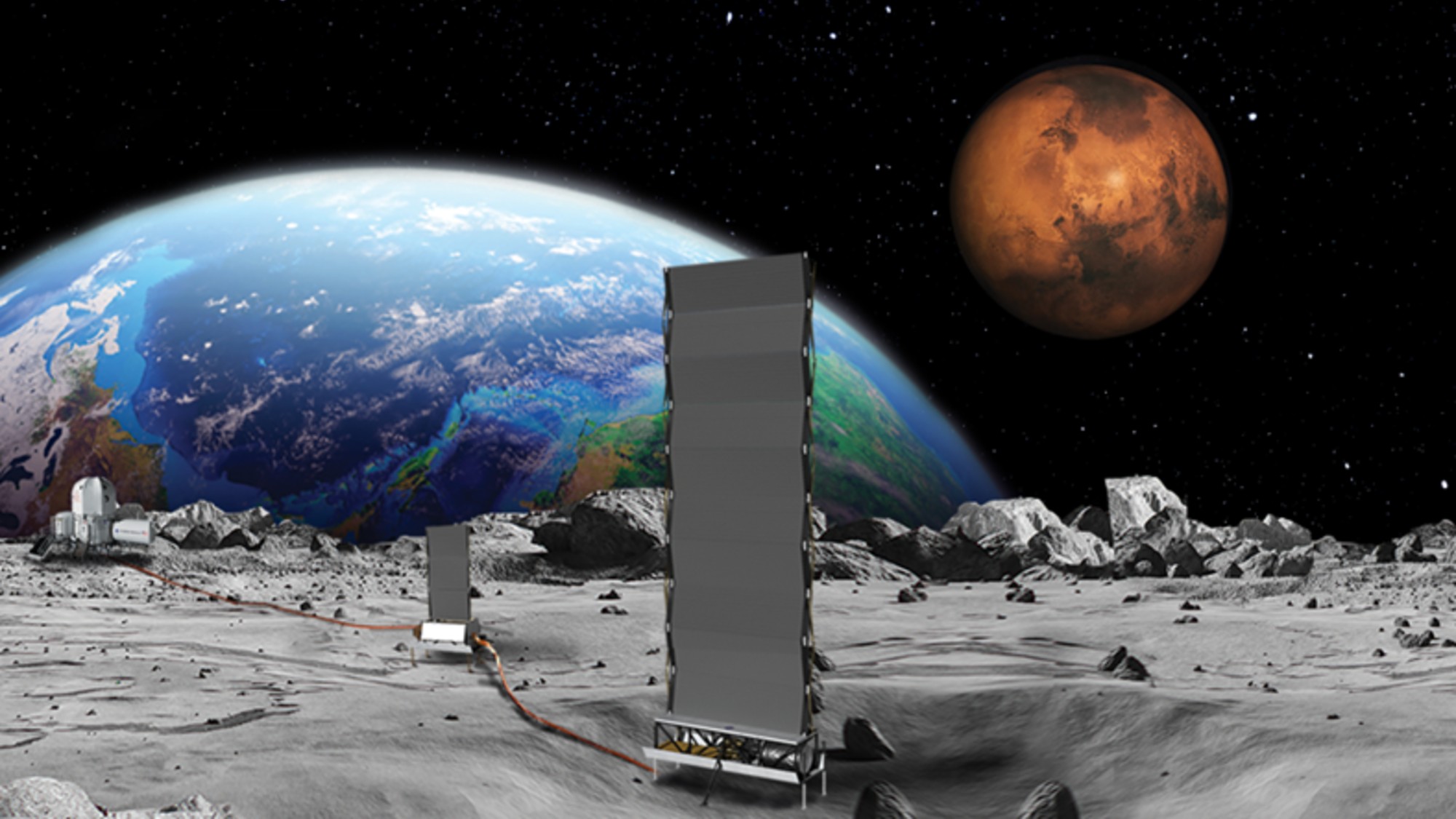 Why does the US want to put nuclear reactors on the moon?
Why does the US want to put nuclear reactors on the moon?Today's Big Question The plans come as NASA is facing significant budget cuts
